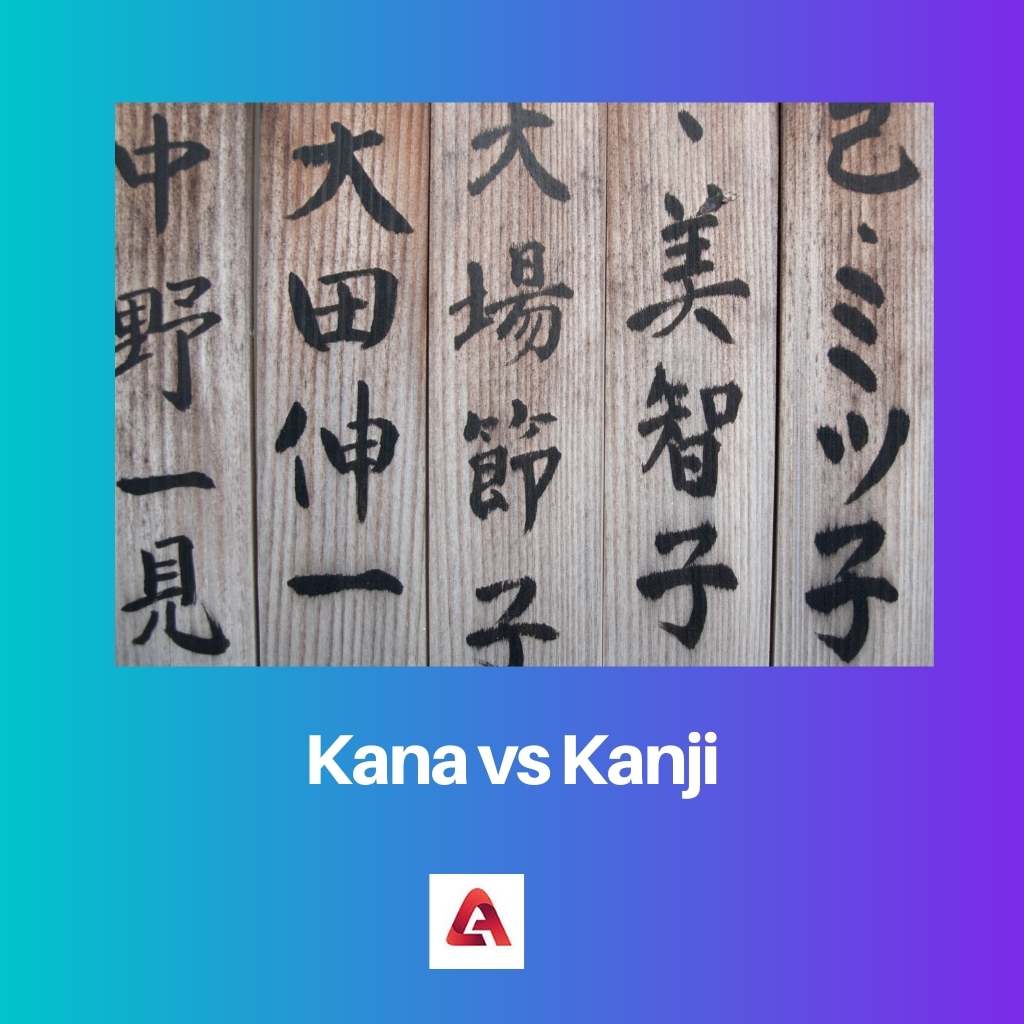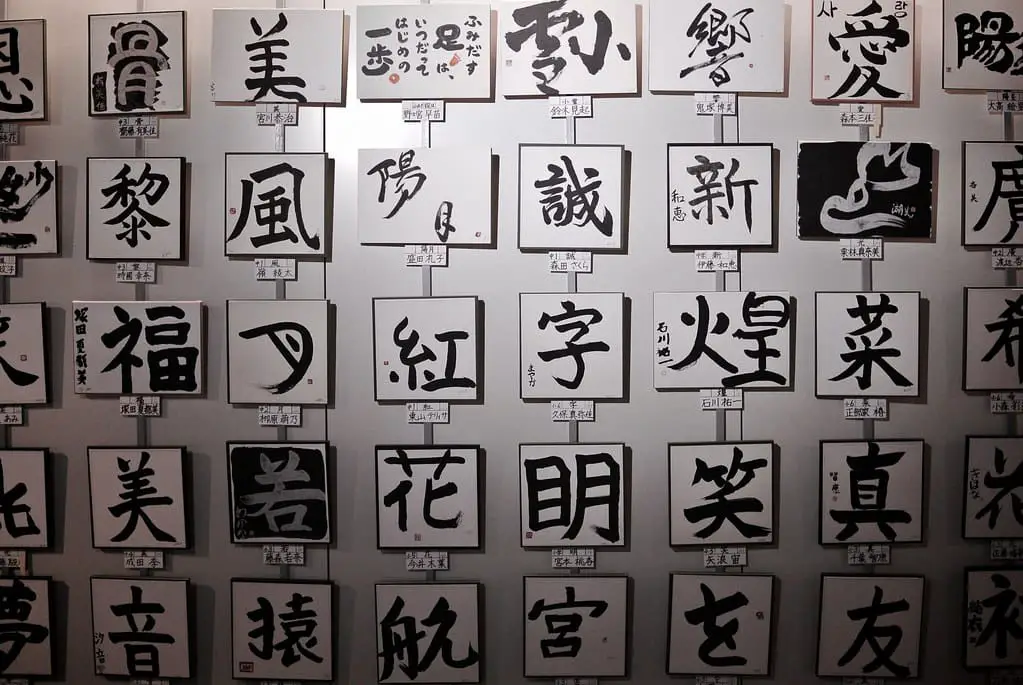Among all other inventions, the development of writing script is one of the greatest. Because of one’s ability to write, one can now express their thoughts and facts to others through written communication.
Worldwide, Latin alphabets, Chinese characters, Devanagari, Arabic alphabets, and Bengali alphabets are all widely used.
Kana and Kanji are different writing styles that originated primarily in Japan and China individually. Kana consists of two syllabaries: katakana and hiragana.
On the other hand, kanji is a writing style consisting of signs, letters, and symbols of the Chinese language but is mainly used in Japanese writing based totally on its photonics.
Key Takeaways
- Kana is a syllabic writing system in Japanese, consisting of two scripts: hiragana and katakana, while kanji are Chinese characters adapted for the Japanese language.
- Hiragana and katakana represent syllables, each corresponding to a specific sound, while kanji characters convey meaning and pronunciation.
- Kana scripts are used for native Japanese words and grammatical elements, while kanji represents loanwords from Chinese and words with complex meanings.
Kana vs Kanji
The difference between kana and kanji is that the kana is a Japanese syllabic-based writing alphabet remarkably similar to usage dependent on morae (sounds of characters of Japan). In contrast, the kanji character is a logographic character first introduced to Japan in the 5th century. Depending on the application, both scripts are appropriate together.

There are two sorts of current writing styles in Kana: hiragana and katakana. In the kana script, both of them are utilized in various ways.
Hiragana is written in cursive for grammar purposes, such as verbs, nouns, adjectives, and adverbs. When writing technical names, katakana is written in a divaricate style.
Kanji is a Chinese writing system that is adopted in a variety of countries, including Japan. It is a language built on meaning, with each character having a unique meaning.
It is a symbol-oriented language in which signs are used to interpret meanings. As a corollary, it’s also known as a noun-based language.
Comparison Table
| Parameters of Comparison | Kana | Kanji |
|---|---|---|
| Country of Origin | The Kana script was invented in Japan, an Asian country. | A Chinese script expert devised the Kanji script. So, it is a Chinese script. |
| Writing Style | This script is used in text form. | Kanji script is used in the form of pictures and shapes. |
| Invented Century | This writing is thought to have been created in the ninth or tenth centuries. | In the fifth century, the Japanese script, kanji, was created. |
| Usage | Kana can be employed in a variety of ways for both grammar and literature. | Kanji being a symbolic script is primarily for nouns but, kanji can be combined with kanji to make it complex. |
| Number of Characters | In kana, the number of characters is 50-60. | Kanji script consists of 4 times more characters (2000) than Kana. |
What is Kana?
Kana is a Japanese writing alphabet, established in the 9th century and defined in 1990. Before its creation, the Japanese used foreign writing systems to convey their beliefs and culture in a nonverbal form.
Kana consists of two sets of scripts, such as hiragana and katakana. According to the partition, each character has its pronunciation and meaning. To learn the kana script, begin with hiragana and then move on to katakana syllabaries.
Keep the hiragana characters in mind when learning kana grammar. Foreign and technology-related terms are written in katakana syllabaries. Both hiragana and katakana came into existence in a similar period.
Some sounds, such as ye and wu, are not defined in modern Japanese writings since characters are limited in the kana script. The writing style varies, just like the usage. Hiragana is written in a cursive script, while katakana is written in an angular script with a sharp corner.
Around 800 A.D., Hiragana became popular among Japanese ladies. Later males preferred to write in these characters as well. The katakana script was developed from the symbol language and is a simplified version of the kana script.
Non-natives may find it difficult to retain both hiragana and katakana since they do not use picture-based characters like the kanji script. Otherwise, these are a simple writing style of Japan when compared to the kanji script.
What is Kanji?
Kanji, the first foreign written alphabet used in Japan, was introduced in the 5th century. Previously, all communication took place verbally. Originally, kanji was a Chinese non-verbal script. After the 5th century, the publishing of newspapers and novels started in Japan.
Kanji is a Japanese symbol and sign language. Thus, the kanji’s characters are read from their shapes and signs instead of the sound of the characters.
In the kanji script, the sign that looks like a tree is employed to express a noun, tree. This script was codified in the year 1981.
To make compound words and write the grammar in kanji script, kanji is combined with itself or with the hiragana character of the language, Kana. This Japanese kanji differs from Chinese kanji in a few ways.
Kanji might be called a complicated language since it has thousands of distinct signs and symbols. However, it is simple to grasp and utilize in the formulation of sentences because hiragana sentences are difficult to comprehend.
To begin remembering this script, one should be conversant with kanji radicals. After that, master all of the basic kanji characters or strokes in order. Once you’ve mastered these, move on to the kanji’s easiest (Joyo script) script.

Main Differences Between Kana and Kanji
- Kana is a Japanese-written script that is unique to the country. On the other hand, the Japanese inherited the kanji script from the Chinese.
- In the 9th century, the Japanese developed the kana script, whereas kanji was established in the 5th century and became Japan’s first written script.
- The scripts are written in a variety of styles. Kana is a written format similar to that of the English alphabet. On the contrary, the Kanji script is used as a symbol and a sign.
- Kana consisting of hiragana and katakana, is a written script for both grammar and other words. Kanji needs the assistance of hiragana to write verbs, adjectives, and adverbs.
- In the Kana script, only a few characters are induced. In the case of kanji writing script, the number of characters is roughly 200.
- https://www.sciencedirect.com/science/article/pii/S0093934X75800770
- https://books.google.com/books?hl=en&lr=&id=eTk6AAAAQBAJ&oi=fnd&pg=PR1&dq=kana+and+kanji&ots=FChxflPQtm&sig=V7b86kpqt1UParU6F1ifDtMxFR0

I wish there was more information about the origins of Kana and Kanji.
There are so many resources about Kana, Kanji and the history of Japanese writing online, if you are interested. It’s really fun to learn about it!
I found this article to be very informative.
I’m so fascinated to have just found out about Kana and Kanji, they’re so different! I feel like I want to learn them now.
The writing system is one of the most important tools in the world.
You’re right. The kana and kanji scripts in the Japanese writing system are fascinating for anyone interested in linguistics.